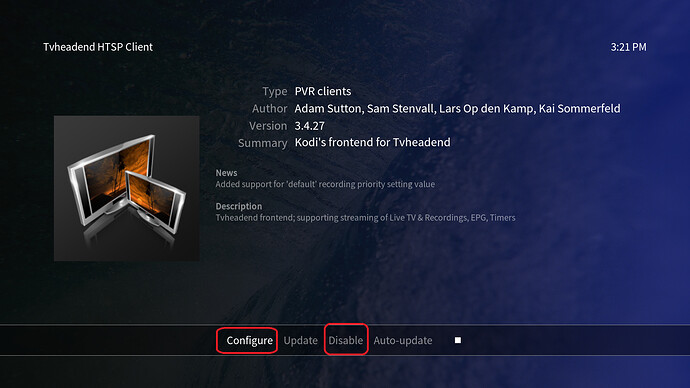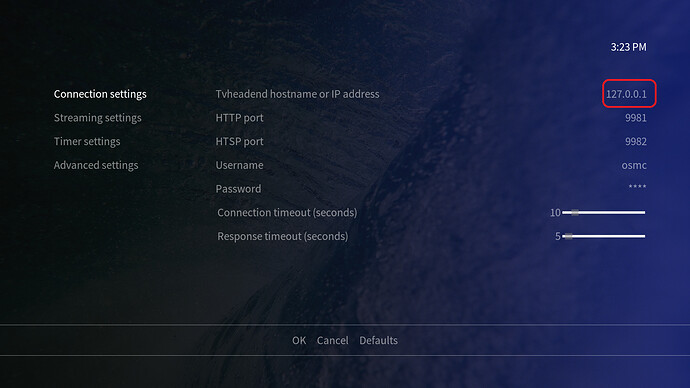While still struggling with DVB-T2 support on Vero 4K, I just got the idea to take an old Raspberry, temporarily plug the DVB-T2 dongle there and use it just as Tvheadend server for streaming to the Vero 4K over the LAN. Has anyone experience with this setup and can tell me how to configure OSMC to use an external Tvh server?
Thx
Andreas
1 Like
That’s what I have. Just enable the TVH PVR client on the vero and point it to the Pi’s IP address.
2 Likes
I’ve had running a similiar (using a DVB-C solution) setup for tests with a Pi2 and a Vero 4k and its quite simple:
Assuming you have set up all things fine on the Pi and the TVHeadend server is running there.
On the Vero 4k you install a tvheadend client like the Tvheadend HTSP CLient under
Settings → Add-on-Browser → My-Add-ons → PVR Clients → HTSP tvheaend client
but you configure the client to use the ip or DNS of the Pi instead the default loopback address 127.0.0.1 … and then enable the client. That’s all. Will add a screenshot later.
1 Like
This is genius, thank you! 
Kicking myself for not thinking of this before, I have a few RPi3 dotted around the house running OSMC so this solution is perfect.
… but be careful with the bandwidth. If several devices starts playback from that single Pi3 having TVHeadend server active, they might run into a network saturation of the default LAN interface of the Pi which is good for around 8-9 MB/s, only.
Yeah, figured that would be an issue. But as the Live TV would only be used rarely and only on the Vero upstairs I shouldn’t run in to this problem too much.
Really just wanted something to play around with until the Vero update. Getting the basic TV on the pi itself is proving to be challenging enough to keep me occupied for a bit 
Thanks again for the idea.
1 Like
Hi grahamh,
I gave it a trial with an old Raspi 1 with latest Raspbian (Kernel 4.9.35) installed, plus manually added the MN88374 firmware file to /lib/firmware. Surprisingly and different to what I had seen before in Ubuntu 16.04 on my PC, it doesn’t work so far at least.
Seems like the hardware gets properly detected and also loads the firmware without errors, but w_scan doesn’t list any muxes afterwards.
While it could be related to not properly loading the firmware, I’d be interested to hear what configuration you are exactly using on your Pi?
Thx
Andreas
I’m running OSMC on the Pi(2). Back when I started with TV dongles on linux (2-3 years ago) I had trouble getting w_scan to work but tvheadend did work. Maybe give tvh a try.



